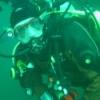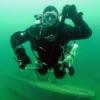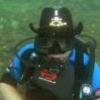Let's dispell some rumors here.
1. There are generally only 3 places that will see high pressure gas with a high oxygen content. They are the tank, the first stage, and the SPG/dive computer on a hose. If you are diving with Nitrox percentages over ~40% these must be prepared for use with that kind of mix.
2. Many shops blend nitrox "in the tank" meaning they put pure oxygen in your tank and then put in the air on top of it. This is called partial pressure blending. If ANY shop you use to fill your tank does this, you must have your tank cleaned to accept oxygen.
3. If you tank your previously cleaned tank, that was prepared for oxygen, and you fill it with air that is NOT "oxygen compatible", meaning it is not filtered to a very specific level, you must re-clean the tank. The danger here is not to the diver. The danger is to the fill station operator.
4. BCDs, second stages, etc., are seeing low pressures of the mix, and since it is already diluted by the time it gets there, there is nothing to worry about. This is not true with titanium.
Now, hopefully, everything is as clear as mud.


















